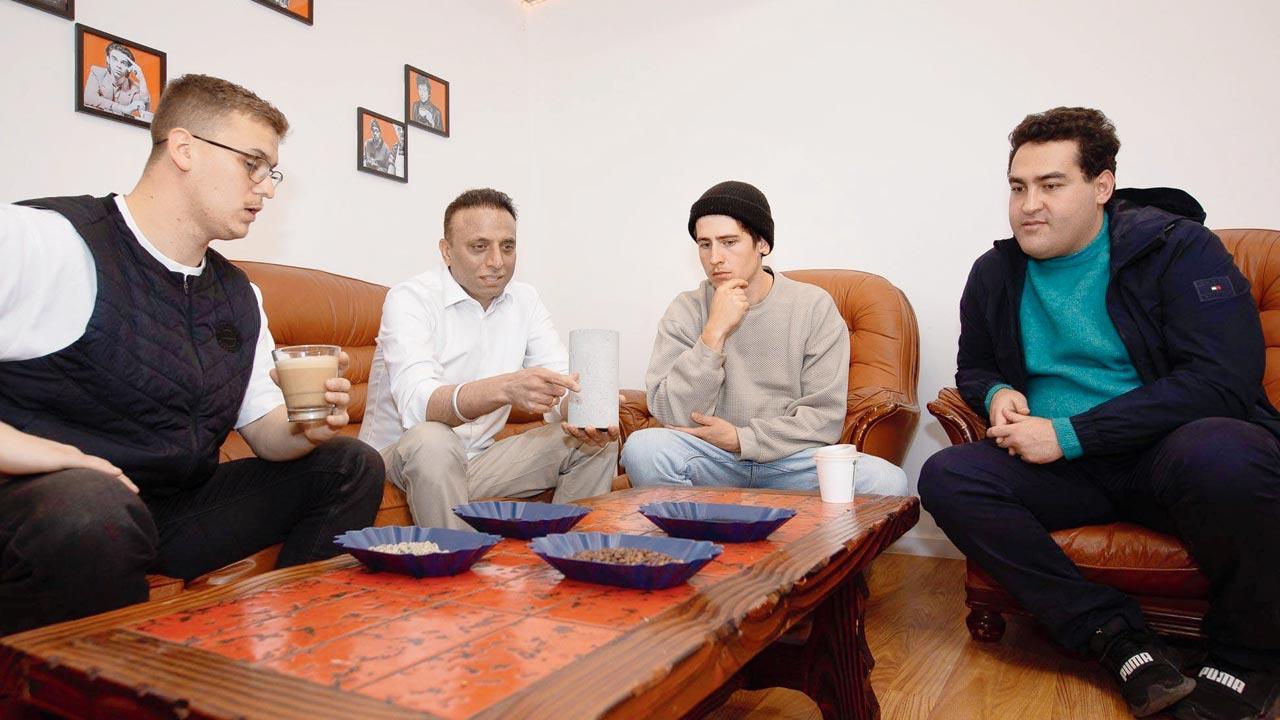Home / Sunday-mid-day / / Article /
How coffee makes concrete stronger
Updated On: 10 September, 2023 06:48 AM IST | Mumbai | Gautam S Mengle
Australian national of Indian origin, who has just shown the world how coffee grounds can make concrete stronger by 30 per cent, tells mid-day his story

Dr Rajeev Roychand (second from left) and his research team have developed a way to use coffee grounds to strengthen concrete by 30 per cent
It can wake you up, it is an anti-oxidant, it is said to be nature’s best pre-workout drink when it comes to burning fat while working out, and now, it can make stronger houses.
No, this writer has not had too much coffee. Just the usual four cups since morning. The last fact mentioned above is supported by scientific research, detailed in a research paper titled Transforming spent coffee grounds into a valuable resource for the enhancement of concrete strength, published in the Journal of Cleaner Production this year. And the lead author of this research paper is Dr Rajeev Roychand, an Australian national originally from sadda Punjab.




